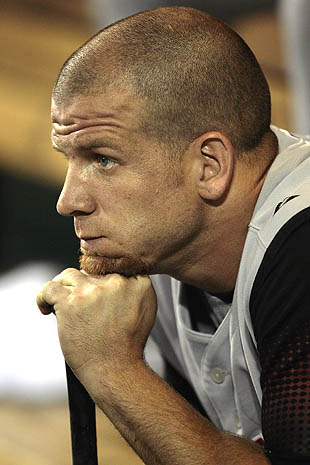 The heartbreaking story of Ryan Freel took a hopeful turn recently. The New York Times reports that Freel's family has approved to have some of Freel's brain tissue tested for "a degenerative brain disease known as chronic traumatic encephalopathy."
The heartbreaking story of Ryan Freel took a hopeful turn recently. The New York Times reports that Freel's family has approved to have some of Freel's brain tissue tested for "a degenerative brain disease known as chronic traumatic encephalopathy."
The results might yield some answers as to why Freel took his own life at age 36 in December after he suffered a series of concussions — possibly as many as 15 , including 10 during his baseball career, his stepfather speculates. Several recent suicides by NFL athletes and others has prompted the research.
Aside from closure for Freel's family, answers also might help those suffering from brain trauma. From the New York Times:
Freel had consulted with doctors and had had examinations, mostly psychological, according to his former wife, and even became aware of the C.T.E. studies. “He sought answers to his problems,” she said.
Yet he did so reluctantly, according to his mother. She indicated he would not always heed her advice to seek help from doctors or counselors and was especially reluctant to carry through with follow-up appointments.
“It was very difficult to get him to do anything like that,” she said.
Freel’s mother dropped by his home on the Friday before Christmas and, noticing that he was not feeling well, urged him to visit a counselor. He agreed to do so the next Monday, she said. His body was discovered the next day.
2012 ended with sadness for the Freels because of his death. But this kind of research gives hope. Not only to his family, which searches for even the trace of an answer as to why Freel is gone, but also going forward, so we can prevent or treat brain trauma for the next athlete who needs it. Freel was an exceptional case for baseball, which hasn't had the historical head trauma of the NFL. But that doesn't mean he's the only one.
Already counting down to spring training?
Follow @AnswerDave, @bigleaguestew, @KevinKaduk on Twitter,
along with the BLS Facebook page!
No comments:
Post a Comment